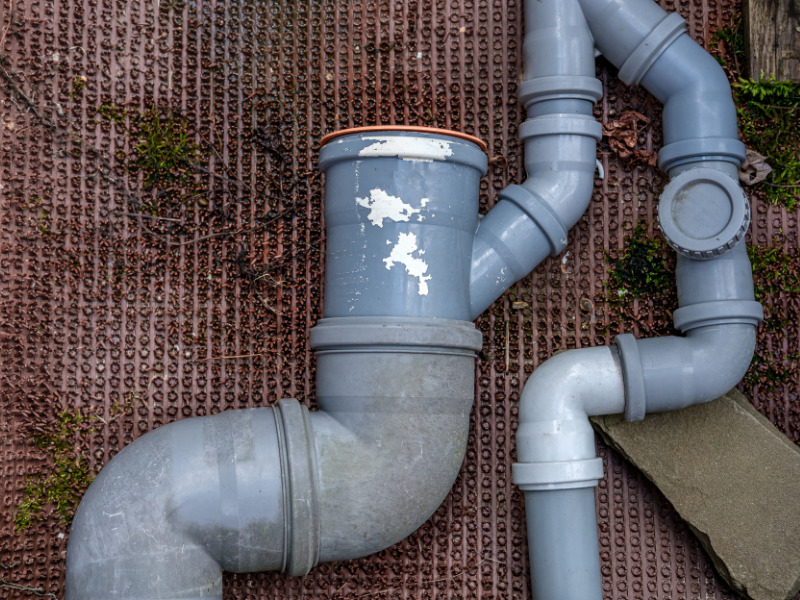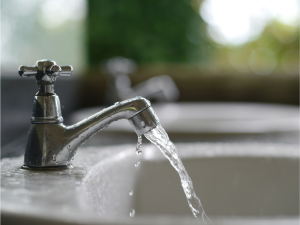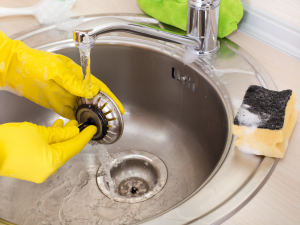More than many homeowners would like to admit that blocked pipes are a common occurrence in many states. Though the most common cause of these blockages is a mix of food grime and hair forming a clog higher up in the plumbing system, the home’s sewer lines are just as likely to see blockages.
Due to how hard these blockages are to find, many homeowners are often rushed to question whether sewer pipe replacement or relining is their best solution.
Despite the more obvious differences between the two options and what exactly they are, sewer relining and replacement are far more different. To help you figure out what each plumbing procedure is and what their benefits are, we’ve put together this guide to help. Both are incredibly useful, but like with any other procedure, they also should be used when specific situations call for them.
Our team at Clover Contracting is ready to help you choose which procedure you need, all with the advice needed to give the best possible solution for long-term efficiency.
What Is Sewer Pipe Replacement?
As the name suggests, pipe replacement is the procedure that a plumbing company will do to replace a section or an entire length of your home’s sewer drain. Typically, this procedure won’t be done unless the technician believes that the current pipes are too damaged for any other solution to be tried out.
While it may seem that this should be the best possible solution for all sewer problems, there are also quite a few reasons why it isn’t always suggested. One main reason is that sewer pipe line replacement requires far more excavation into the ground around the pipe. Since this often leads from your home to the public sewer system, the digging will ruin your lawn.
Additionally, between relining sewer pipe vs replacement, the cost is often higher. The work needed for proper sewer line replacement is quite labor-intensive and requires more tools to fix longer amounts of piping. Of course, depending on where the damaged pipe is, the final cost is likely to be more affordable. Some plumbing companies – like our team at Clover Contracting – also have financing options if you need them.
What Is Sewer Pipe Line Relining?
Like sewer line replacement, sewer pipe relining is a procedure done to add a new lining to the damaged drain pipe. Though it may seem incredibly easy at first, the relining process is actually more intricate.
Pipe relining is a much newer plumbing technique used in more recent times, allowing plumbers and technicians to easily fix a cracked or blocked pipe without much labor-heavy work.
What truly makes relining a great option – if you’re comparing sewer pipe relining vs replacement – is the lack of any need to excavate the damaged pipe. More often than not, a specialist doing a relining does the entire process from above ground, leaving your entire lawn completely intact.
Thanks to the process’ simplicity, the reduced need for extra workers also means that the amount you need to pay is much less. This is often one of the main reasons that quite a few homeowners prefer this option if it’s available.
How Does Pipe Relining Work?
When the process is being done, sewer line relining is nearly identical to minimally invasive surgeries. Depending on where the damage is, a specialist or licensed rooter will feed a CCTV scope into the pipe to perform an inspection. If any tree roots or clogs are found, they’ll use a technique called hydro jetting to clear it out. From there, all that’s left is fixing the pipe.
The relining process itself involves using a special, resin-coated pipe liner. Depending on the company and the extent of the damage done, the specialist will use one of three different methods to push the lining in. If your home’s sewer pipes already had a relining done in the past, the old damaged liner will be pushed out or reinforced.
The Key Differences in Pipe Relining vs Replacement
Though we’ve listed why many homeowners prefer pipe relining over sewer line replacement, each procedure still has its benefits. As mentioned earlier on in the article, line replacement is often the only option available for the badly damaged pipe. This is often because this is also the most effective solution. To help you decide, we’ve put together each one’s advantages and disadvantages.
Pipe Relining Pros
Some of the pros include:
- A cheaper option. Since the process only needs one or two technicians at most to install the new liner into place, the final cost is often far more affordable.
- The job needs less time. Since the process is simply pushing a liner and expanding it to fit the pipe, a relining job is often finished far faster.
- A durable fix. When using a resin-soaked liner to repair the damaged pipe, the cured liner is often quite durable, practically forming a second pipe in the damaged one.
- A safe and reliable solution. Since there aren’t many workers needed to do a relining job, everyone involved – and the homeowners – are quite safe during the process.
Pipe Relining Cons
Some of the cons include:
- It may not be the best solution all the time. If your sewer pipes are badly damaged, relining won’t be effective enough.
- Roots can still cause damage in other unlined sections of pipe. The process only fixes the damaged area, after all.
- The problem can happen again if the work is done incorrectly. A badly done relining job is as likely as other procedures, despite its newer methods.
Sewer Pipe Replacement Pros
Some of the pros include:
- More useful with badly damaged pipes. If you’re facing massive cracks and bad damage in the pipe, the best solution is to replace the entire section.
- A better view of the problem. While CCTV equipment is effective, physically checking the pipe is a better way to check for its condition.
Sewer Pipe Replacement Cons
Some of the cons include:
- Labor intensive. Replacing an entire section of piping will need different workers that can use different tools and with the required expertise.
- The noise can be loud. More often than not, sewer pipes are quite large, so the machinery needed to move it can be incredibly noisy.
Takeaway
Contact one of our team members at Clover Contracting to learn even more about the process for relining or replacing a sewer pipe.








